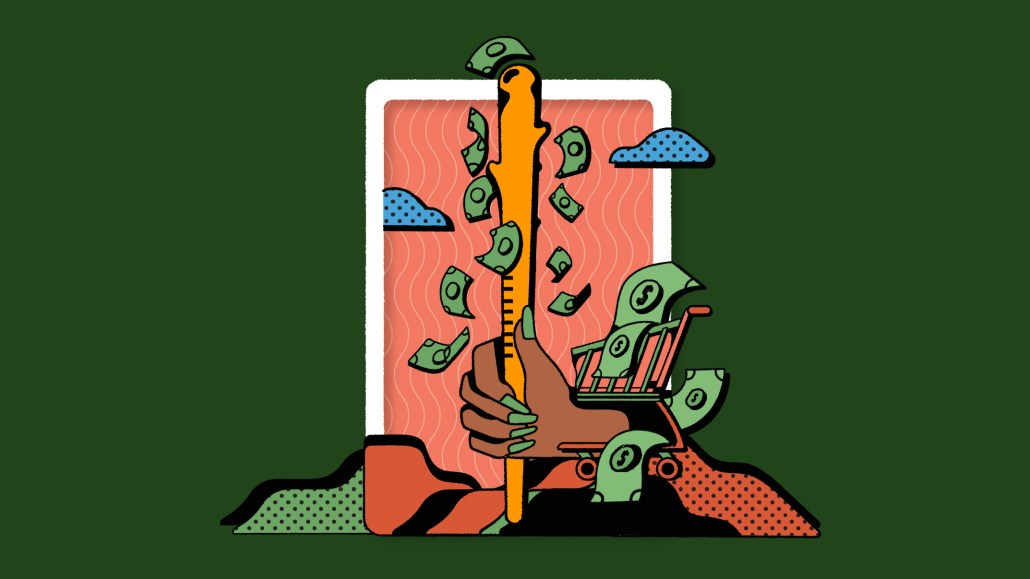Save 50% on a 3-month Digiday+ membership. Ends Dec 5.

At the close of a year, it can be instructive to look back on what’s transpired. And if a picture is worth a thousand words, then these five charts, are worth enough words for a medium-length Harper’s cover story, even though you can plow through them faster than a medium-sized Twitter thread. They are also built using insights gathered throughout the year from Digiday+’s research panel.
Look on below.
Pandemic vs. office work
We begin, as we (sadly) must, with the pandemic. Publishers entered 2021 hopeful that they’d be able to get back to something normal-seeming by the end of the year. But as the media world cheered — then groaned — as vaccination rates rose after plateauing this past spring and summer, it became clear that a return to full-time, in-office work was unlikely.
By the third quarter of 2021, well before the omicron variant’s rise more definitively scuttled many office return plans, nearly two thirds of publishers had heard that they would be returning to in-person work only occasionally.
How the cookie’s crumbling
Ad position: web_incontent_pos1
As unpleasant as the pandemic’s lurches felt at the beginning and end of 2021, in many respects the year was marked by a kind of stability, albeit an unusual one.
The digital media ecosystem began the year focused on how it would respond to the unofficial end of third-party cookies. Contextual targeting quickly leapt out as a popular tactic, not just among opportunistic vendors but even in unlikely corners such as CTV, wth many brands and agencies indicating they’d spend more of their ad budgets on contextual ad campaigns.
Ad buyers and sellers also began the year trying to figure out how to integrate alternate identifiers built by companies ranging from Amazon to The Trade Desk into their plans. Publishers expect alternate identifiers will play a pivotal role in their businesses when third-party cookies are phased out of the industry’s plans. But thanks in part to Google’s extension of its deadline for deprecating those cookies to 2023, those identifiers are not yet part of most publishers’ ad sales deals.
Ad position: web_incontent_pos2
Yet for all the progress publishers have made in trying out these new products, as we head into 2022, it seems clear that a lot of the largest issues publishers face still loom on the horizon. Despite having their playbooks set for how to deal with the end of third-party cookies, the percentage of publishers worried about its effect on their businesses remains identical to what it was in the first quarter of 2021.
Platforms passé?
One of the defining traits of 2021 seemed to be how little energy publishers put toward platforms. While TikTok gathered a lot of attention and publishers continued to fret about the roles that Amazon and Google play in digital media, publishers largely stayed focused on their own properties.
More in Media

What publishers are wishing for this holiday season: End AI scraping and determine AI-powered audience value
Publishers want a fair, structured, regulated AI environment and they also want to define what the next decade of audience metrics looks like.

Digiday+ Research Subscription Index 2025: Subscription strategies from Bloomberg, The New York Times, Vox and others
Digiday’s third annual Subscription Index examines and measures publishers’ subscription strategies to identify common approaches and key tactics among Bloomberg, The New York Times, Vox and others.

From lawsuits to lobbying: How publishers are fighting AI
We may be closing out 2025, but publishers aren’t retreating from the battle of AI search — some are escalating it, and they expect the fight to stretch deep into 2026.
Ad position: web_bfu


